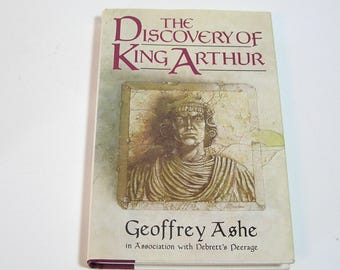

As Simplicius succeeds to the papal throne, a certain Riotimus or Riothamus, King of the Britons, comes over to Gaul with a reported 12,000 men in response to Anthemius’ appeal.

Map by Ty Grey in The Discovery of King Arthur 1985Ĥ68. Anthemius then seeks British aid against Euric (King of the Visigoths from 466) who has greedy eyes on northern Gaul - Armorica (Brittany) and the Kingdom of Soissons under the general Syagrius, ‘King of the Romans’ (see map). Leo I, Emperor of the East (457-74), appoints a Byzantine noble, Anthemius, as Emperor of the West. We start with some contemporary or near-contemporary Continental writers - Cassiodorus ( c 531), Jordanes’ Gothic History ( c 551), Gregory of Tours’ History of the Franks ( c 591) and especially Sidonius Apollinaris’ Letters ( c 470-80) - who collectively provide the following account as interpreted by Ashe:Ĥ67. Determined efforts have been made to discover his ultimate sources, and Ashe suggests where we might search to find the missing links. Geoffrey of Monmouth’s History ( c 1136) gives the first full-blown account of King Arthur we possess, and appears to form the basis of most of the later medieval romances.

Geoffrey Ashe’s paper for the Journal of the Medieval Academy of America involves a radical rethink of some conventional ideas of the historical Arthur, and we are grateful for a complimentary copy provided by Speculum which forms the basis for this summary. Far from being anchored firmly to the Battle of Badon (around 500 AD) he keeps drifting out of our grasp further back in time, a sort of “Doctor Who on horseback” as television reporter said. Of necessity the arguments are involved and rather complex - I hope it all has a little more than just historical curiosity!ĪRTHUR continues to inspire further, sometimes original research. The Speculum review is from Pendragon XIV/3, summer 1981, and the book review appeared in Pendragon XVII/4, autumn 1984 (published February 1986). It prompted me to look up some reviews I penned of Geoffrey Ashe’s book at the time, plus one of the academic papers that preceded it.īelow is the slightly edited texts of those reviews with some linking commentary, for those who like to muse on the historical origins of the Arthurian legends. Traces of an Arthurian Source in Geoffrey of Monmouth’s History.Ī recent guest post by Katie Wilkins of Doing Dewey on Lory Hess’s blog Emerald City Book Review introduced a 1985 publication that stimulated some discussion. Geoffrey Ashe: “A Certain Very Ancient Book” Cover art Chris Lovegrove for Pendragon: Journal of the Pendragon Society XIV/3 1981


 0 kommentar(er)
0 kommentar(er)
